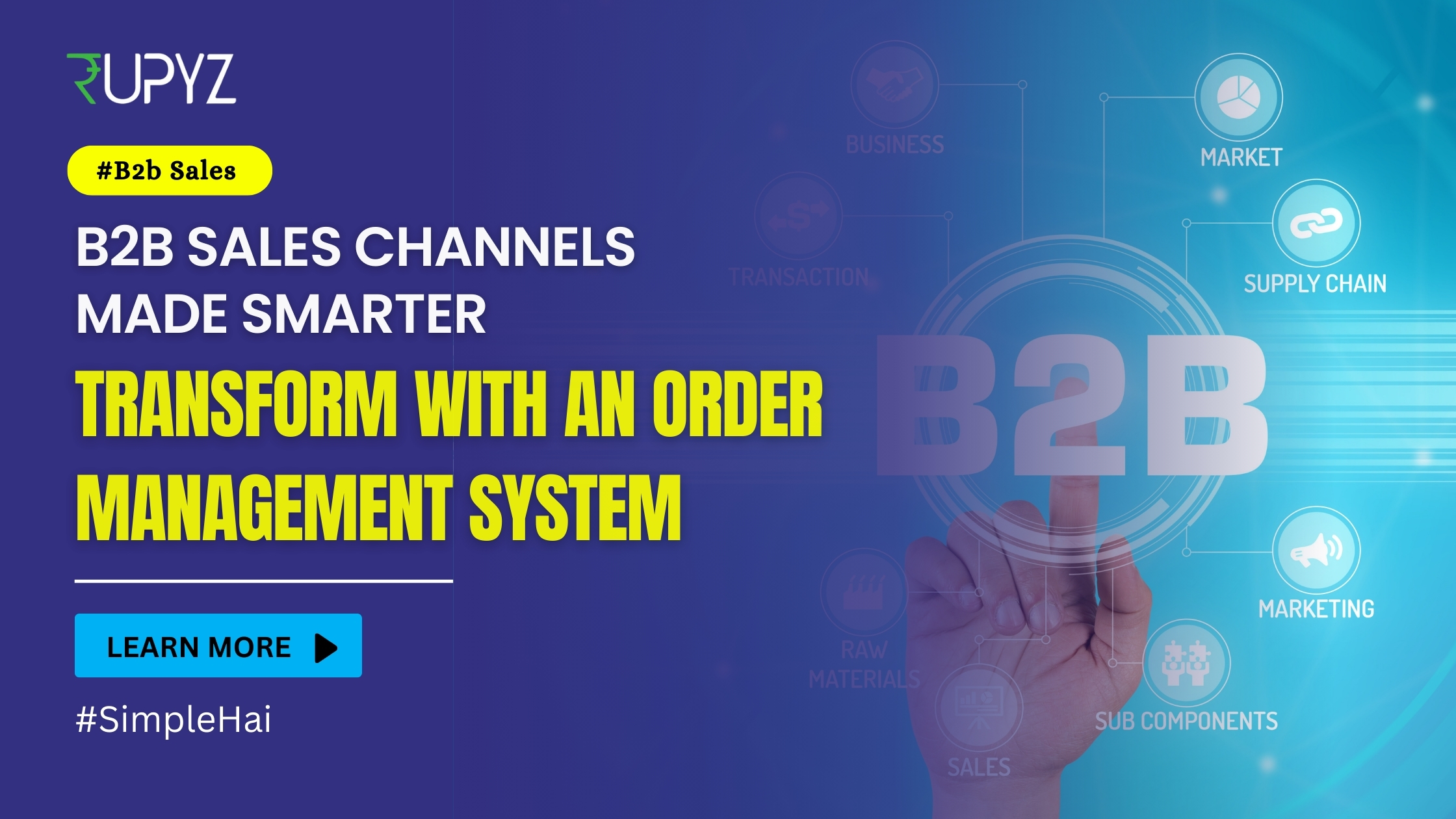
How to Optimize B2B Sales Channels with an Order Management System
In today’s fast-paced B2B world, businesses expect quick, accurate, and transparent ordering processes. Any delay or mistake can harm your reputation and push customers away. That’s why an Order Management System (OMS) is essential. It helps streamline order processing, improve accuracy, and enhance customer satisfaction.
Why B2B Order Management Is Challenging
Managing B2B orders can be more complicated than B2C because:
- Orders are often larger and more frequent
- Pricing can vary based on contracts or customer agreements
- Orders may come from different channels (like phone, email, or e-commerce)
- Delivery and fulfillment often involve multiple locations
Using manual processes to handle these tasks can lead to errors and slowdowns. An OMS automates these steps, helping businesses manage orders more efficiently from start to finish.
What is a B2B Sales Channel ?
Why Are B2B Sales Channels Important?
- Expand Reach: Partners and marketplaces help you access new markets and customer segments quickly.
- Specialization: Channel partners or agencies often have deep expertise in certain industries or regions.
- Efficiency: Self-service and online channels reduce manual effort and speed up the sales cycle.
- Relationship Building: Direct sales teams can nurture complex, high-value deals with a personal touch.
B2B Sales Channel vs. Distribution Channel
- Sales Channel: Focuses on how you interact with and sell to business customers (e.g., sales reps, online platforms).
- Distribution Channel: Focuses on how products move from manufacturer to end user (e.g., logistics, warehousing).
Often, these overlap. For example, a distributor acts as both a sales and distribution channel by selling and delivering your products to retailers.
Key Benefits of a B2B Order Management System for Efficient Sales Channels
- Centralized Order Processing: An OMS gathers orders from various channels (like online stores, phone, or sales reps) into one platform. This reduces manual entry and gives your team one place to manage orders.
- Real-Time Inventory Updates: An OMS shows current stock levels across all warehouses. This helps prevent over-ordering or running out of stock.
- Automated Order Handling: Automation reduces human error. The system can check orders, generate invoices, and send updates automatically.
- Customized Pricing and Offers: B2B businesses often have complex pricing models. An OMS lets you set personalized prices for different customers based on their contracts or order history.
- Improved Communication: Customers receive automatic updates about their orders, building trust and reducing the need for manual follow-ups.
- Seamless Integration: An OMS can connect with your other systems (like ERP or CRM) to keep data consistent and accessible.
- Flexible Fulfillment Options: The system supports different ways to deliver orders, whether from a warehouse, store, or direct shipment.
How a B2B OMS Works
- Order Capture: Collects orders from various channels.
- Validation: Verifies product availability and pricing.
- Processing: Prepares the order for fulfillment.
- Fulfillment: Sends the order to the warehouse for shipping.
- Tracking: Keeps customers updated on delivery.
- Returns: Manages returns and refunds when needed.
Best Practices for Using an OMS
- Streamline Order Entry: Make sure the process is consistent, no matter where the order comes from.
- Automate Routine Tasks: Reduce manual work to minimize errors.
- Integrate Your Systems: Connect the OMS with ERP and CRM tools to keep information up to date.
- Personalize Customer Interactions: Use the OMS to offer customized pricing or order options.
- Provide Multiple Delivery Options: Let customers choose the most convenient way to receive their orders.
Real-World Example
A wholesale distributor struggled with manual order processing, leading to mistakes and delays. After implementing an OMS, they reduced errors by 35% and sped up order fulfillment by 40%. This improved customer satisfaction and increased repeat business.
Conclusion: Why You Need an OMS
An Order Management System simplifies complex B2B sales processes, helping your business operate more efficiently. By centralizing orders, automating tasks, and integrating with other systems, an OMS improves accuracy, speeds up delivery, and keeps customers happy.
Looking to optimize your sales channels? Explore how Rupyz’s OMS can streamline your order management and support your business growth.
Transform your B2B Business
We would love to give a comprehensive walk through of our system & demonstrate how we can contribute to your growth story.
Book A Demo

